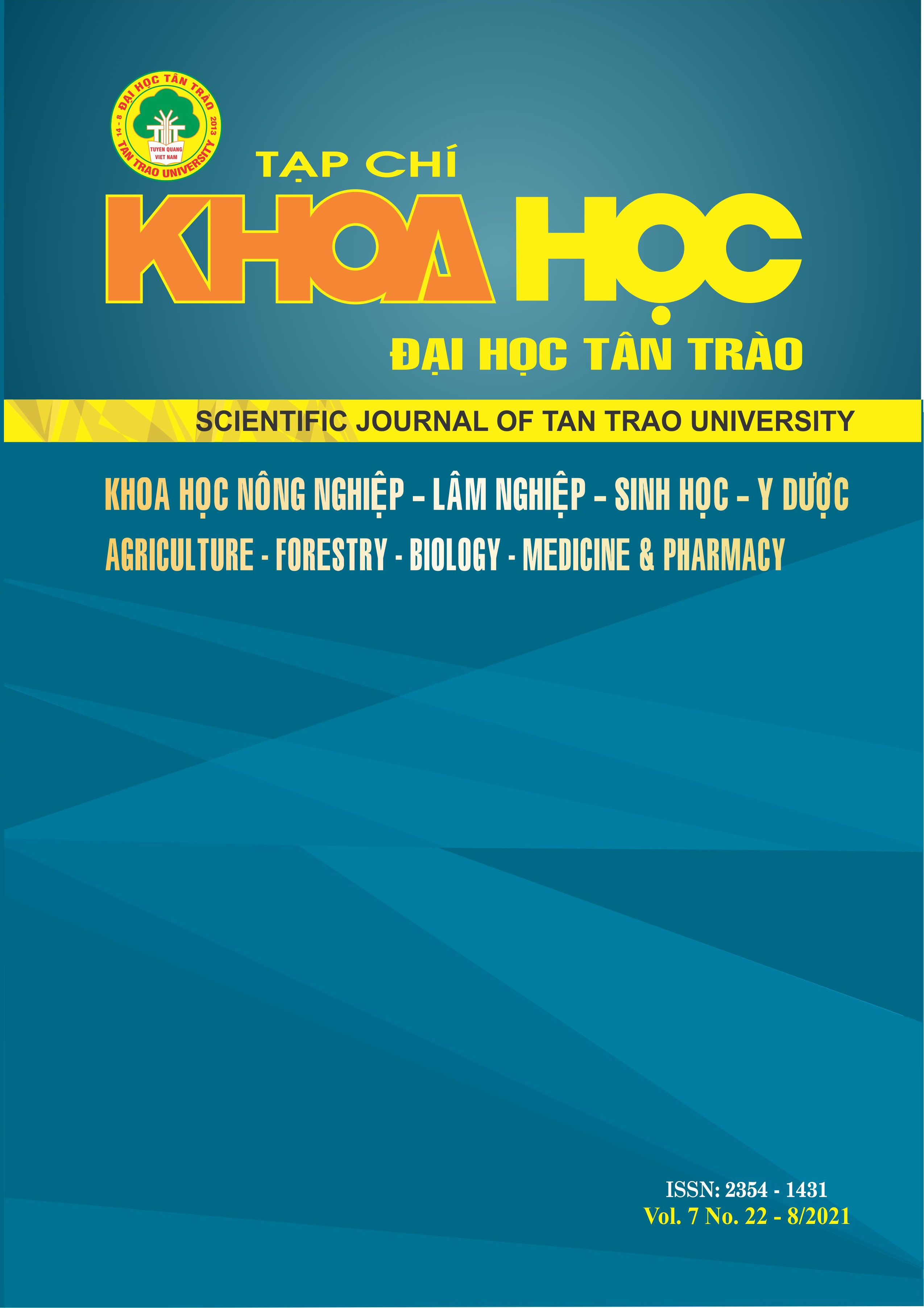THE CURRENT SITUATION OF CHICKEN RAISING AND WASTE TREATMENT IN PHU LUONG DISTRICT, THAI NGUYEN PROVINCE
DOI:
https://doi.org/10.51453/2354-1431/2021/454Keywords:
chicken raising; poultry waste treatment; environmental pollution; health impact; farm household.Abstract
This study was conducted in Phu Luong during October 2020 to evaluate the current situation of local chicken raising activities and waste treatment. The research was carried out through personal interviews with 90 households in Dong Dat and Phan Me communes. As a result, scale of chicken raising of the households is small with about 1,200 chicken heads/household. Chicken sheds are mainly located in residential areas. Most of the households have applied different methods to treat chicken waste. Nonetheless, the current treatment efficiency is rather limited, causing environmental pollution and adverse impacts on human health. The most common methods for treating chicken waste are spraying probiotics to treat odors and using probiotic bedding. The major proportion of the producers has been trained on how to mitigate livestock environment issues. However, the proportion of farmers learning through production groups, cooperatives and technical guidelines from off-taker companies are very small. Results of this research would serve as a useful basis for relevant agencies and farmers to take appropriate action to protect the rural environment and the health of local households and animals.
Downloads
References
[1] Alexandratos, N., Bruinsma, J. (2012). World agriculture towards 2030/2050: the 2012 revision, ESA Working paper No. 12-03. Food and Agriculture Organization, Rome.
[2] Rodic, V., Stojcic, M. D., Peric, L., Vukelic, N. (2011). The environmental impact of poultry production. Biotechnology in Animal Husbandry, 27:1673-1679.
[3] Ministry of Natural Resources and Environment (2014). National Environment Report 2014 - Rural environment. MONRE - Viet nam, Ha Noi, Vietnam.
[4] Dinh, T. X. (2017). An Overview of Agricultural Pollution in Vietnam: The Livestock Sector. World Bank, Washington DC.
[5] Bunton, B., O’Shaughnessy, P., Fitzsimmons, S., Gering, J., Hoff, S., Lyngbye, M., Thorne, P.S., Wasson, J., Werner, M. (2007). Monitoring and modeling of emissions from concentrated animal feeding operations: overview of methods. Environmental health perspectives, 115(2):303-307.
[6] Broucek, J. (2015). Emission of harmful gases from poultry farms and possibilities of their reduction. Ekologia Bratislava, 34(1):89-100.
[7] Le, H. A., Dinh, M. C., Dang, T. X. H. (2017). Emission Inventory for NH3, N2O, and CH4 of Animal Husbandry Activities: A case in Tho Vinh Commune, Kim Dong Distric, Hung Yen Province. VNU Journal of Science: Earth and Environmental Sciences, 33(4):117-126, Vietnam.
[8] Thainguyen Statistics Office. (2020). Thainguyen Statistical Yearbook 2019. Thainguyen Statistics Office. Available:
http://cucthongkethainguyen.gov.vn/nien-giam-thong-ke/asset_publisher/H6ZZmmTe73rP/content/niem-giam-thong-ke-tinh-thai-nguyen-nam-2019?redirect=%2Fnien-giam-thong-ke&inheritRedirect=true, accessed Feb 16, 2021.
[9] Division of Agriculture and Rural Development of Phu Luong District (2020). Report: Evaluate the performance of agricultural, forestry and fishery production tasks according to the Resolution of the XXIII District Party Congress in the 2016-2020 period; direction and missions for the period of 2021-2025. Division of Agriculture and Rural Development of Phu Luong District, Thai Nguyen Province, Vietnam.
[10] Le, T. M. C., Tran, M. H., Tran, T. H. P. (2016). Collective action in pig production in Tan Yen District, Bac Giang Province. Vietnam Journal of Agricultural Sciences, 14(8):1386-1394.
[11] Tran, H. N, Nguyen, K. B. T. (2016). Application of biological padding to improve some environmental indexes of poultry farms in two communes, Ha Nam province. VNU Journal of Science: Earth and Environmental Sciences, 32(1S):296-300.
Downloads
Published
How to Cite
Issue
Section
License

This work is licensed under a Creative Commons Attribution-ShareAlike 4.0 International License.
All articles published in SJTTU are licensed under a Creative Commons Attribution-ShareAlike 4.0 International (CC BY-SA) license. This means anyone is free to copy, transform, or redistribute articles for any lawful purpose in any medium, provided they give appropriate attribution to the original author(s) and SJTTU, link to the license, indicate if changes were made, and redistribute any derivative work under the same license.
Copyright on articles is retained by the respective author(s), without restrictions. A non-exclusive license is granted to SJTTU to publish the article and identify itself as its original publisher, along with the commercial right to include the article in a hardcopy issue for sale to libraries and individuals.
Although the conditions of the CC BY-SA license don't apply to authors (as the copyright holder of your article, you have no restrictions on your rights), by submitting to SJTTU, authors recognize the rights of readers, and must grant any third party the right to use their article to the extent provided by the license.


